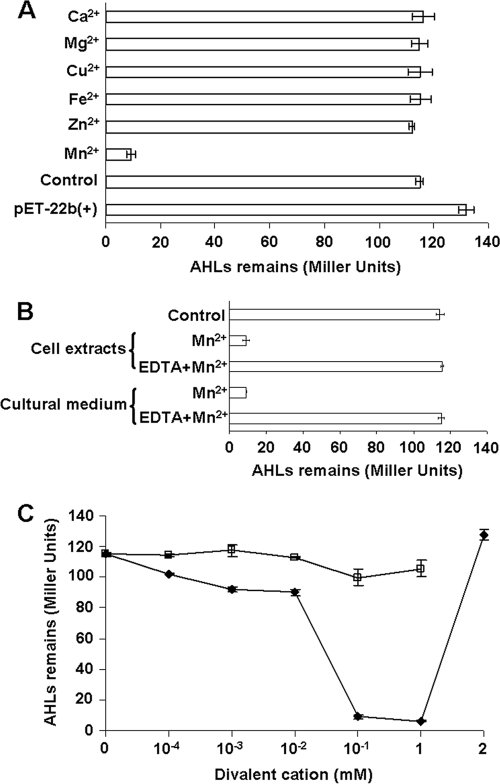FIG. 5.
The manganese(II) ion is important for the activity of AidH. (A) Effects of different divalent cations on the activity of AidH. E. coli BL21(DE3) cells carrying recombinant AidH were cultivated for 8 h after IPTG induction at 28°C. The indicated metal ions were added to the medium to 1 mM. E. coli BL21(DE3) carrying the vector pET-22b(+) or pET-AidH cultivated without exogenous metal ions was used as a control. Crude cell extracts were incubated with N-(3-oxooctanoyl)-l-homoserine lactone (OOHL) (final concentration, 100 nM) for 1 h at 37°C, extracted with ethyl acetate, and evaporated to dryness. The sample was dissolved in methanol, and the activity of AHLs was measured by using the biosensor A. tumefaciens strain NTL4(pZLR4). (B) EDTA abolishes AidH activity in the presence of Mn2+. Mn2+ and EDTA added to medium or in cell extracts were at 1 mM and 5 mM, respectively. Control indicates lysate from cells not expressing AidH. AHL activity was measured as described above (A). (C) Effects of different concentrations of Mn2+ and Zn2+ on the activity of AidH. Mn2+ (♦) or Zn2+ (□) at the indicated concentration was added to E. coli cultures expressing AidH, and the AHL-degrading activity of the cell extracts was evaluated with the A. tumefaciens biosensor. Error bars indicate standard deviations determined from three independent experiments.

